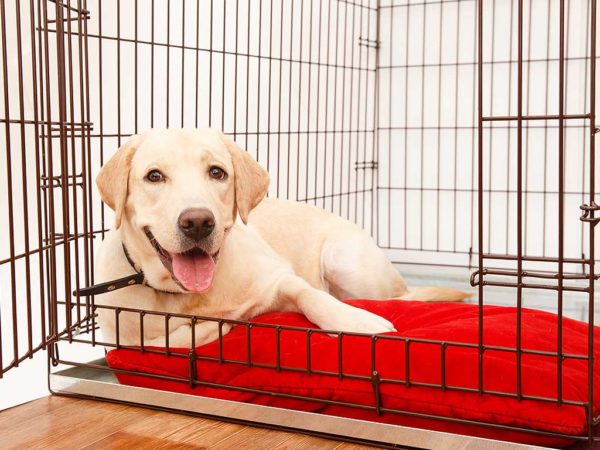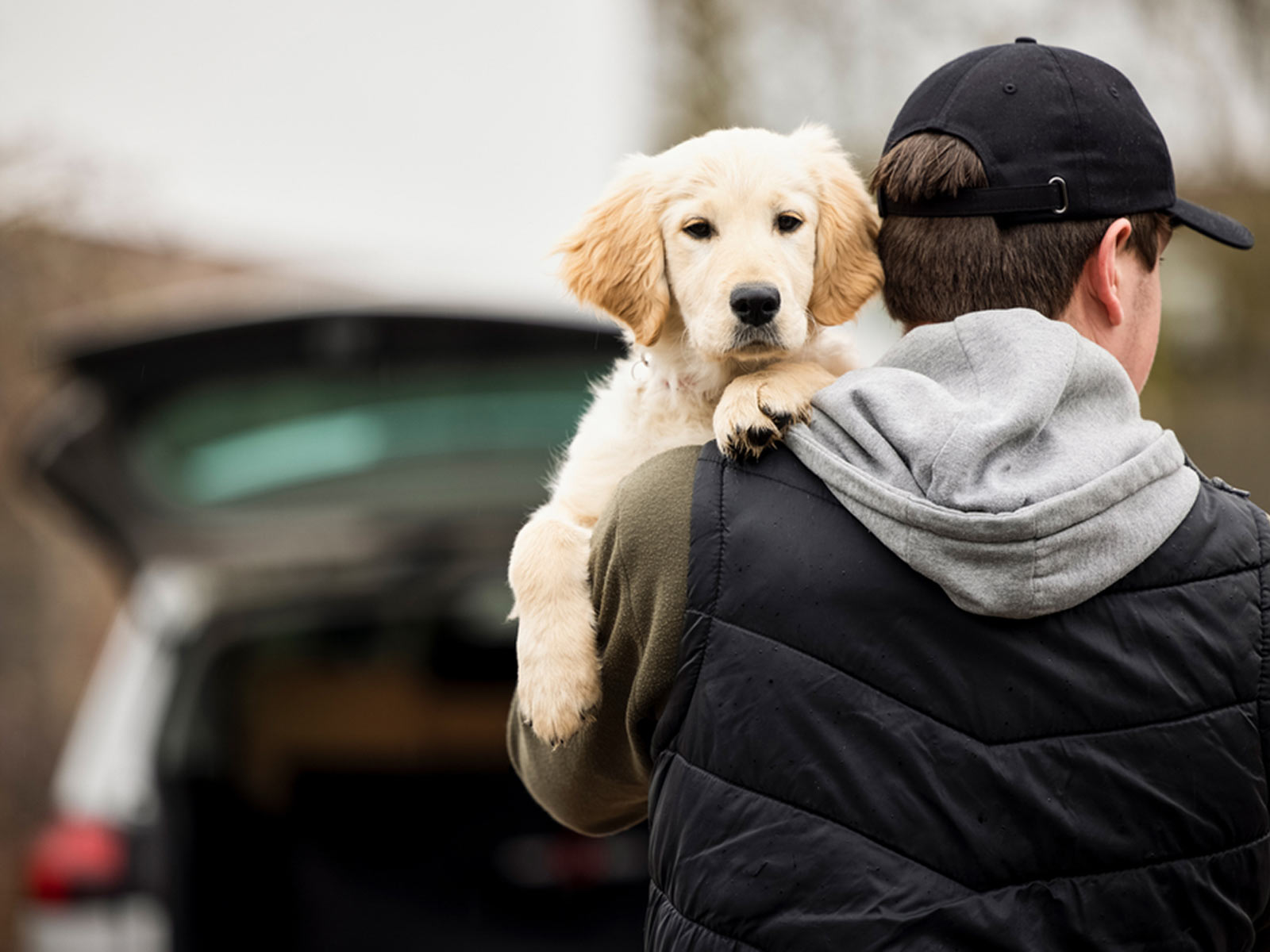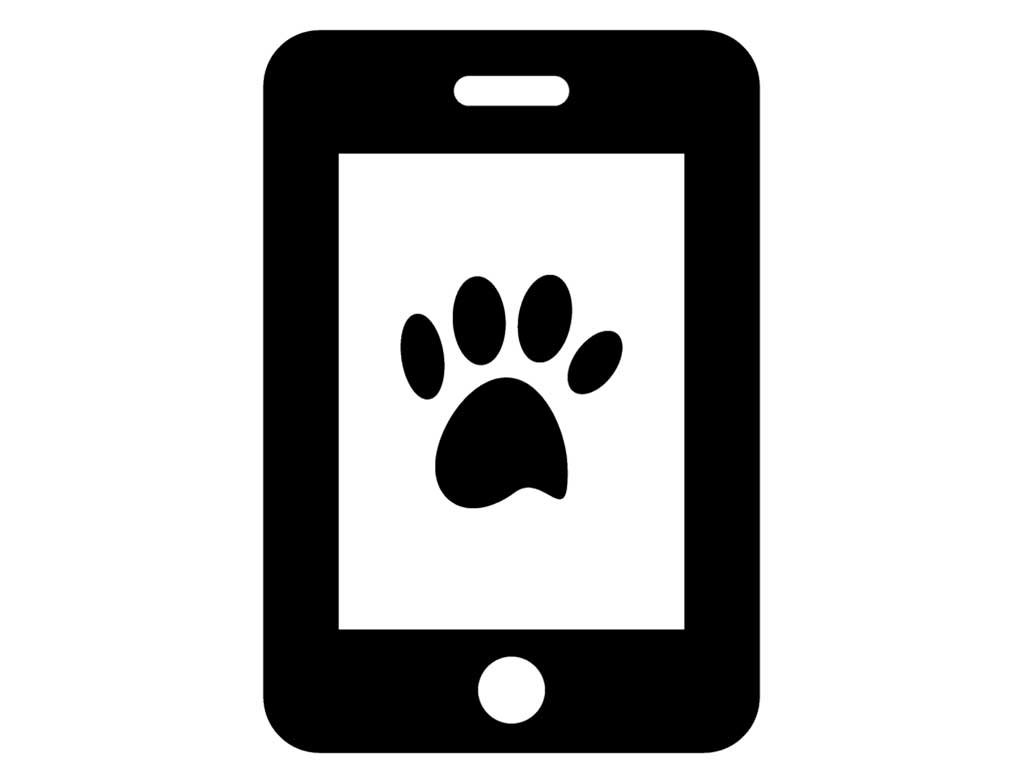Crate Training Your Dog
Crate training is a great way to teach your dog obedience, help him adjust to being away from you, and potty train him. Crate training your dog also provides him with safety in the home, especially if he is a puppy and surrounded by chewing temptations. It can also serve as a sanctuary and safe place for your pet. Sounds good, right? But what is crate training, and how do you put it into practice?

Choose the Right Crate
First things first, you must choose the right crate for your dog. Just like first time home buyers want to choose the right space for them, you also want to choose the right space for your dog. It will greatly impact the success of the training and happiness of your dog. The proper size crate will be only a few inches longer than your dog’s dimensions. You want your dog to be able to turn around and reposition easily, and you want them to be able to nap comfortably. But giving too much room will only increase the chances that they relieve themselves. If your dog is a puppy, you will want to buy a crate that will fit your dog when he is grown. But, you should still limit your pup’s space by creating a divider and not giving your pup access to the entire crate until he is bigger.
Never Use Force
You want your dog to associate the crate with happiness and safety. That will not happen if you force your dog inside. He will come to fear it and try to avoid it at all costs, which is the opposite of your goal. How do you get your dog to go in willingly? Start by placing a few treats inside to entice him to go inside. Do not close the door yet. Let him walk in and out as he pleases. When he gets comfortable inside the crate, then shut the door. Only leave it closed for a few minutes before opening it again. This will ensure that your dog does not feel tricked or trapped. After your dog does not seem to care that the door is shut, try leaving the room for short periods of time when he is in the crate. You can then extend these absences to get your dog accustomed to being alone. Your dog will cry or whine on occasion, especially in the beginning, as a way to ask to be set free. You can not give in. This will teach him that if he makes a big enough fuss, you will let him out. That is a bad habit of starting and a very hard one to break.
Stick to a Schedule
Set a schedule and stick to it. Dogs like routine. So, try to put him in and take him out of the crate at the same time every day. If you are using the crate as a method of potty training, make sure you take your pup out at the same time each day. This will teach him to control his bladder and give him the comfort of a routine. If you start a specific tradition, such as taking your dog on a walk before crate time, never stick him in the crate without the walk. Routine and consistency are key, especially in the beginning.
Things to Avoid
Never put anything in the crate that could be a potential danger to your dog. Blankets, towels, toys, and food should all be avoided as your dog could get wrapped up or chock. And it is vitally important that you remember to take your dog’s collar off before putting him in the crate.
Never Use the Crate as Punishment
Just as you should never force your dog into the crate, you should never use it as a “time-out” or punishment for the same reasons. Your dog will come to see the crate as something to fear. And if you put your pet inside the crate as punishment, it will confuse him when you put him inside it during times when he is behaving well. It is an all-around bad idea.
Limit Time Inside the Crate
Leaving an adult dog inside the crate for a few hours is fine, but if you leave him in for long extended periods of time, it is cruel to your pup and may cause him distress. Your dog needs time to run free, play, spend time with you, and relieve himself. You would not want to be cramped up all day, so do not put your dog through it. This is especially important if you are using the crate to potty train a puppy. Your pup’s bladder is very small, and you can not expect him to hold it for extended periods of time simply because he is in the crate.
Some people see crates as bad or cruel. They are not when used properly. Dogs like to nestle up in small spaces, so long as they see those spaces as safe and comfortable. That is why creating a healthy and encouraging crate training routine is so important. If you are interested in more information or dog training, behavior modification, or boarding/training programs, please contact Canine Commander today.




